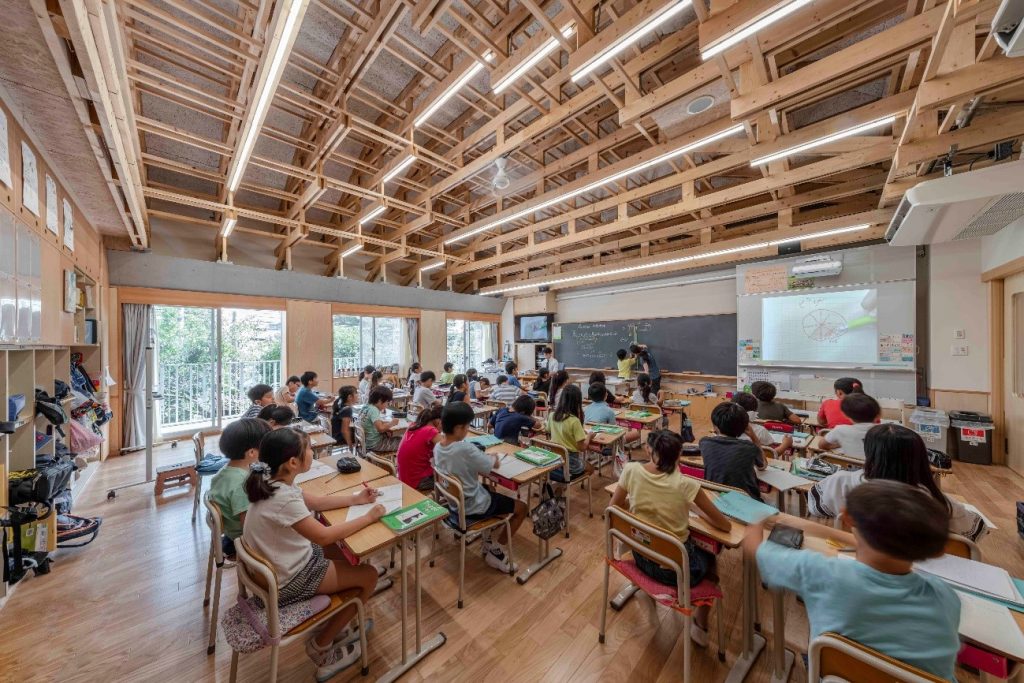Coexistence of Canadian Dimension Lumber and Japanese Lumber

Many wooden structures in Japan are built as Post & Beam construction, and it is important for Canadian dimension lumber to be used in that system to expand its usage. However, the lumber sizes used in Post & Beam are based on traditional Japanese modules and are not harmonized for Canadian dimension lumber use. This is one of the most significant challenges architects face when using dimension lumber in these systems. The Seijo Gakuen elementary school was a perfect example of how this challenge can be overcome.
The solution used here was not to eliminate Japanese post and beam lumber from the building but to find a way to coexist in the same structural system. As a rule, classrooms need wide open spaces and require the use of sturdy posts in these sort of rooms. Canadian dimension lumber sizes are not inherently suitable in these applications. Therefore, Japanese lumber is used as posts in the school. On the other hand, roof structures are just superimposed on posts, and it is not necessary to adjust lumber sizes to meet Japanese post and beam modules. As such, Canadian dimension lumber was used as roof structures at the Seijo Gakuen elementary school. Canadian dimension lumber is aesthetically appealing and has a texture that is agreeable for Japanese people, and Seijo Gakuen’s classrooms highlight their use. One of Canada Wood Japan’s main technical projects at present is to further develop ways to use Canadian dimension lumber as roof structures.
Click to view the photo gallery of Seijogakuen elementary school project


